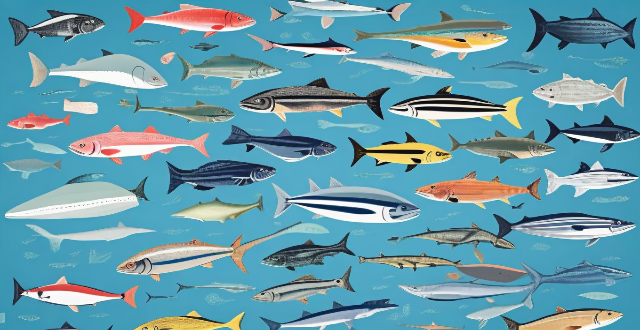This article explores how changing ocean temperatures influence fish migration patterns, affecting fish populations and the fishing industry. Water temperature plays a crucial role in fish metabolism, growth rates, reproduction, and survival, making it essential to understand its impact on migration patterns. Changing ocean temperatures can alter habitat conditions, food availability, cause physiological stress, and affect reproduction, leading to decreased abundance, shifting fishing grounds, economic losses, and ecosystem disruption. Monitoring ocean temperatures and adapting fishing practices are crucial for managing fish populations sustainably and mitigating the negative impacts of climate change on marine ecosystems.

Changing Ocean Temperatures and Their Influence on Fish Migration Patterns
Introduction
Fish migration patterns are influenced by a variety of factors, including water temperature, salinity, currents, and food availability. One of the most significant factors that affect fish migration is changing ocean temperatures. As global temperatures continue to rise due to climate change, the impact on marine ecosystems becomes increasingly evident. This article will explore how changing ocean temperatures influence fish migration patterns and the potential consequences for fish populations and the fishing industry.
The Importance of Water Temperature for Fish
Water temperature plays a crucial role in the life cycle of fish. It affects their metabolism, growth rates, reproduction, and overall survival. Many fish species have specific temperature ranges within which they thrive, and any deviation from these ranges can lead to stress or even death. Therefore, understanding how changing ocean temperatures influence fish migration patterns is essential for managing fish populations and ensuring their long-term sustainability.
How Changing Ocean Temperatures Influence Fish Migration Patterns
Alteration of Habitat Conditions
As ocean temperatures change, the habitat conditions that fish rely on for survival also change. For example, warmer waters may cause coral reefs to bleach, reducing the available habitat for many fish species. This loss of habitat can force fish to migrate to cooler areas where they can find suitable conditions for survival.
Changes in Food Availability
Warmer waters can also lead to changes in the distribution and abundance of prey species that fish depend on for food. As certain prey species move to cooler waters or decrease in numbers, fish must follow them to maintain their food supply. This shift in food availability can result in altered migration patterns and potentially disrupt the entire food chain.
Physiological Stress and Mortality
Extreme temperature fluctuations can cause physiological stress in fish, leading to reduced growth rates, reproductive success, and increased mortality. When faced with unfavorable temperature conditions, fish may be forced to migrate to more hospitable areas to avoid stress and ensure their survival.
Impact on Reproduction
Many fish species have specific temperature requirements for successful reproduction. Warmer waters can alter the timing and location of spawning grounds, affecting the number and quality of eggs produced. This change in reproductive patterns can lead to reduced recruitment (the addition of new individuals into a population) and ultimately affect the overall size and health of fish populations.
Potential Consequences for Fish Populations and the Fishing Industry
The impact of changing ocean temperatures on fish migration patterns has significant implications for both fish populations and the fishing industry. Some potential consequences include:
1. Decreased Abundance: As fish are forced to migrate to cooler waters or face physiological stress and reduced reproductive success, their overall abundance may decline. This decline could lead to overfishing and further exacerbate the problem.
2. Shifting Fishing Grounds: Fishermen may need to adapt to changing fish migration patterns by targeting different areas or species as their traditional fishing grounds become less productive.
3. Economic Impact: The fishing industry relies heavily on predictable fish migration patterns for sustainable harvesting practices. Changes in these patterns could lead to economic losses for fishermen and coastal communities dependent on fishing revenue.
4. Ecosystem Disruption: Altered fish migration patterns can have cascading effects throughout entire marine ecosystems, disrupting predator-prey relationships and potentially leading to imbalances in ecosystem functioning.
Conclusion
Understanding how changing ocean temperatures influence fish migration patterns is crucial for managing fish populations sustainably and mitigating the negative impacts of climate change on marine ecosystems. By monitoring ocean temperatures and adapting fishing practices accordingly, we can help protect valuable fish resources and ensure the long-term health of our planet's oceans.